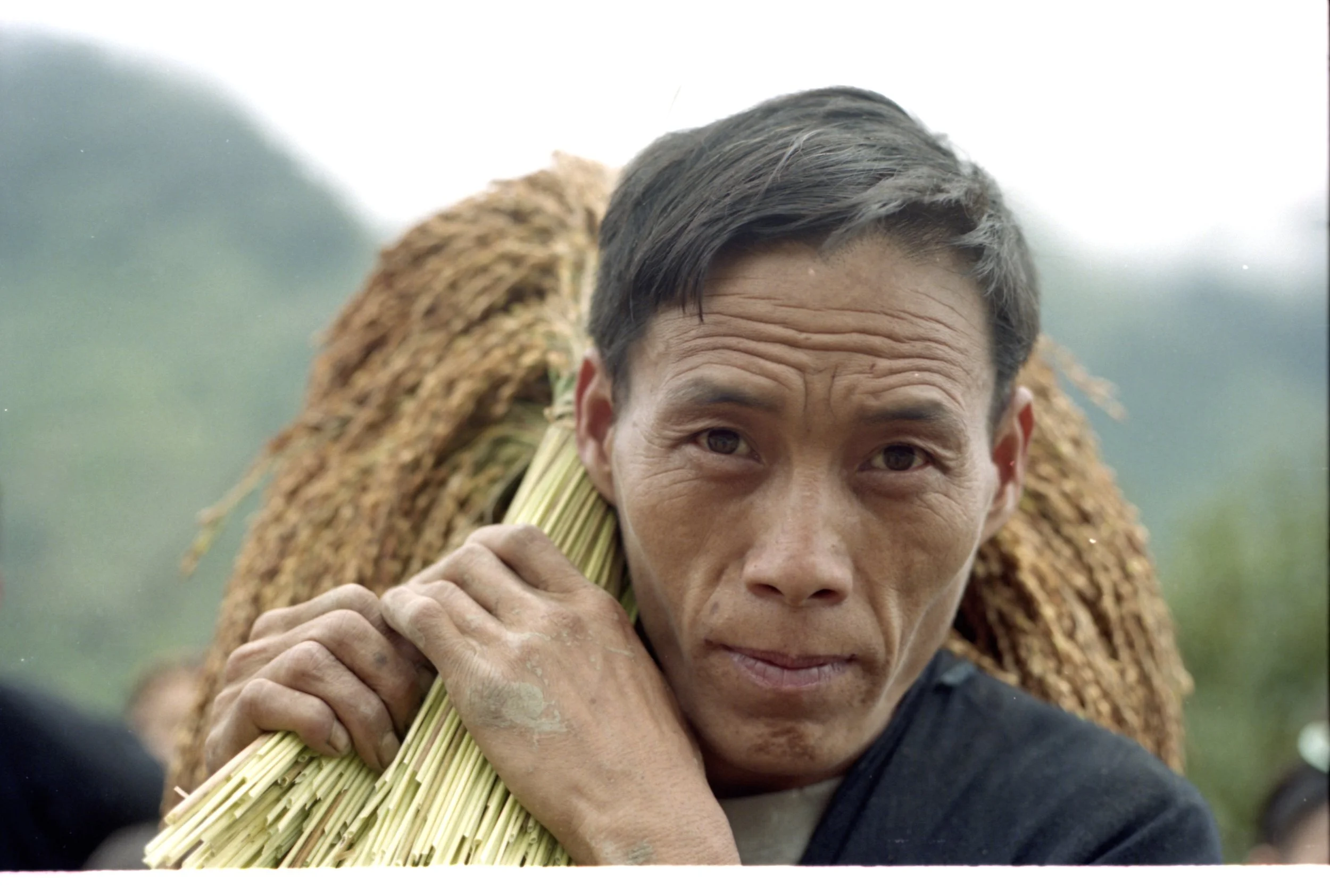Eric Crystal
Photography / Ethnography
SACRED RICE
The cultivation of rice in Southeast Asia was preceded by the planting of sago, jobs tears and millet. Once rice agriculture was adopted in this region padi became the preferred cultigen across a wide spectrum of ethnic groups, nation-states and ecosystems.
From the earliest adoption of rice this grain was not only valued as a culinary staple, but also revered as a metaphor for fertility, a standard of wealth and status and a link between man and controlling deities and spirits.
This section of my website will explore the concept of sacred rice in three communities: Toraja in the Sulawesi highlands, Bali east of Java, and Tai communities in northern Vietnam. Across these diverse cultures rice is universally considered as a marker of soil and by extension, human fertility. Rice is associated with the feminine element and in some cultures is expressly controlled by a female deity of the padi fields.
For Toraja highlanders following their ancestral Aluk To Dolo religion, rice related offerings almost always are undertaken as the sun rises on the east. The controlling deata of the rice fields typically demand that ancestral long stemmed rice be harvested with a rangkapan finger knife to show respect to the controlling spirits. So also loud noises and uncouth cursing should never take place during harvest time for fear of upsetting the spirits of the field. If a water buffalo meat the group may not traverse a rice field in which the pannicles are already filled with grain. Manifesting the sacral enhancement technique of ritual reversal, the ultimate Toraja rice ceremony takes place after the sun sets and continues until dawn. At the Ma'bua Pare villagers give thanks to their high god for the gift of rice. A sacred ceremonial ground is illuminated with long bamboo flares as prayers ascend to the heavens. At this time a primal fertility ritual is enacted, with men imitating the mounting of female buffalo as the assembled crowd as one mimics the cries of newborn water buffalo. Before leaving the sacred stage, performers re enact the entire rice planting cycle. As the ceremony closes long strands of young arenga palm leaves are brought from the pa'buaran ceremonial center back to individual homesteads, foretelling abundant harvests in the future.
In Bali, as in Toraja and Tai, every step of the germinating, seeding, transplanting and harvest is ritually marked. Balinese Hinduism is underlain with a strong indigenous belief system related to the fertility of the fields. Dewi Sri, the goddess of rice, is celebrated at village harvest ceremonies. Her stunning image is lovingly cradled in the arms of temple parishoners and sometimes displayed in living lamak textiles constructed of palm leaves and arrayed on temple offering platforms. As a sign that prayers to the rice goddess have been successfully performed, grains of rice soaked in holy water, are oftentimes affixed to the foreheads of ritual celebrants.
More than a million Tai people reside in northern Vietnam. Close linguistic cousins of the people of the Thai plain, their ancestors migrated to the mountains if northern Southeast Asia before Buddhism reached natal Tai communities in southern China. Me Khau, the "Rice Mother" is the central fertility deity here. Sacred eed grains, the children of the rice mother, are carefully stored to be planted in a sacred field during the next growing season. When the grains are planted simple images of a penis and a vagina are fabricated in the field. As water is poured over the grains the life of the sacred rice, the generation of the new harvest, and the well being of the community as a whole is assured. An image of the Rice Mother is fabricated and erected in the special plot as a pig is sacrificed, prayers are invoked, and sweet rice wine is imbibed through long reed straws. The Rice Mother is known to favor silver jewelry, hand woven cotton cloth, and the characteristic sarongs of the Tai people.
Cloud Cover
Large format photographs that capture the interplay between grand landscapes and intricate cloud formations.































